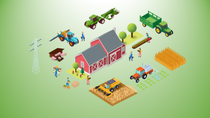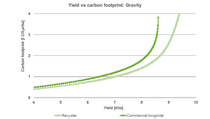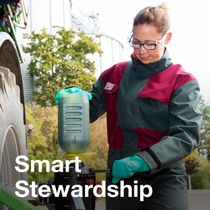Agriculture
Sustainability Assessments
Sustainability is integral to smart farming. It is at the center of a farmer’s daily work and drives improvement efforts on the farm.
BASF has developed a Life Cycle Assessment (LCA) model called AgBalance® to support farmers and value chain players in measuring, demonstrating, and improving their sustainability performance in farm operations across all three sustainability pillars: environmental, social, and economic. The model can assess production of at least 30 different crops on a global scale, and this number is steadily increasing as new studies are conducted.
What are Sustainability Assesments?
Sustainability assessments are tools used to evaluate the sustainability of a particular product, project, program, policy, or system. They typically aim to identify and analyze the social, economic, and environmental impacts and benefits of a given activity over its lifecycle, from production to consumption and disposal.
Measuring sustainability with Life Cycle Assessments
Life cycle thinking yields a robust assessment mechanism to monitor sustainability performance. It is about including environmental, social, and economic impacts of a product over its entire life cycle to go beyond the traditional focus on production site and manufacturing processes. This may facilitate the analysis of trade-offs between the three dimensions of sustainability within entire value chains.
BASF developed AgBalance® in 2009-2010 to assess sustainability in the farming sector, applying principles of the LCA framework defined by the ISO 14040/14044 standards. The state-of-the-art model is based on the Eco-Efficiency Analysis Its environmental impact assessment is based on the European Commission’s Product Environmental Footprint (PEF) recommendation; it incorporates the newest methodology by the International Panel on Climate Change (IPCC) and quantifies scope 1, 2 and 3 emissions as defined by the GHG Protocol. AgBalance® received the latest assurance statement from the DNV GL certifier in 2020 and is scientifically validated with external stakeholders.
A variety of farming practices and inputs shape sustainability in agriculture
AgBalance® offers a comprehensive comparative analysis of farming practices showing the results in relation to a baseline scenario. How does it work in practice? The first step is to record all available data to characterize for the analyzed cultivation systems. Using diverse scientific methodologies, the inserted data are then recalculated into environmental, economic, and social impacts – click on the icons in the infographic below to view the different impact categories.
Input categories on a farm

Improving sustainability performance through a holistic view of farm operations
AgBalance® offers both single and aggregated environmental impact assessments. Single environmental impact in AgBalance® covers 15 recommended Product Environmental Footprint (PEF)12 impact categories plus a biodiversity assessment. Aggregated environmental impact summarizes these impact categories in a single result, in accordance with the recommended PEF normalization and weighting scheme. Aggregating the impact across all categories allows for a holistic view of farm sustainability. Crucially, it can capture the trade-offs across different kinds of environmental impact as well as that between economy and environment implied by certain practices.
Click below to read about AgBalance’s impact categories (including the main drivers in the context of farm operations):
Eco-Efficiency
An Eco-Efficiency Portfolio of crop production practices is compared by plotting economic and environmental AgBalance® study results against each other. The relative comparison of the practices’ environmental and economic performance helps to detect potential improvements and supports decision making for sustainable farming.
Take a look at one concrete example of our Sustainability Assessments

UK fungicide trials on winter wheat demonstrate improvement to nitrogen utilization
Nitrogen emissions from fertilizers are the main contributor to the carbon footprint of wheat production. Improving Nitrogen Use Efficiency (NUE) thus plays a key role in enhancing the economic and environmental performance of farming operations.
Our trials demonstrated that inclusion of Revystar® XE (Xemium® + Revysol®) in a fungicide program can lead to such improvements, thus offering farmers higher flexibility in nitrogen management as its use raises yields for a given amount of applied nitrogen.
In a disease-susceptible variety treated with Revystar® XE, 80 kg less N were required to achieve the same reference yield in high Septoria pressure situations, compared to a widely used competitor fungicide. This corresponded to a reduction of 35% CO2e per ton of grain, or 1 t CO2e/ha less released into the atmosphere. 50 kg less N were required to achieve the same reference yield for a more robust variety, corresponding to a reduction of 32% CO2e per ton of grain, or 0.7 t CO2e/ha.
Trials were evaluated using the climate change impact category (PEF 3.0) of AgBalance®. Further trials in the next years will validate interactions across different agronomic situations and disease pressures.
Product Carbon Footprints of BASF’s portfolio
Another topic related to sustainability assessments but distinct from our efforts on measuring the impact of farm operations is that of Product Carbon Footprints (PCFs). At Agricultural Solutions, we address this topic as part of the broader BASF initiative to calculate PCFs for its entire portfolio. PCFs create transparency about greenhouse gas emissions associated with our products. At the same time, they are only one piece of a bigger sustainability picture.
BASF avails of own ISO-certified methodology to perform these calculations.
More key change drivers within Climate-Smart Agriculture
Learn more about our other sustainability commitments



